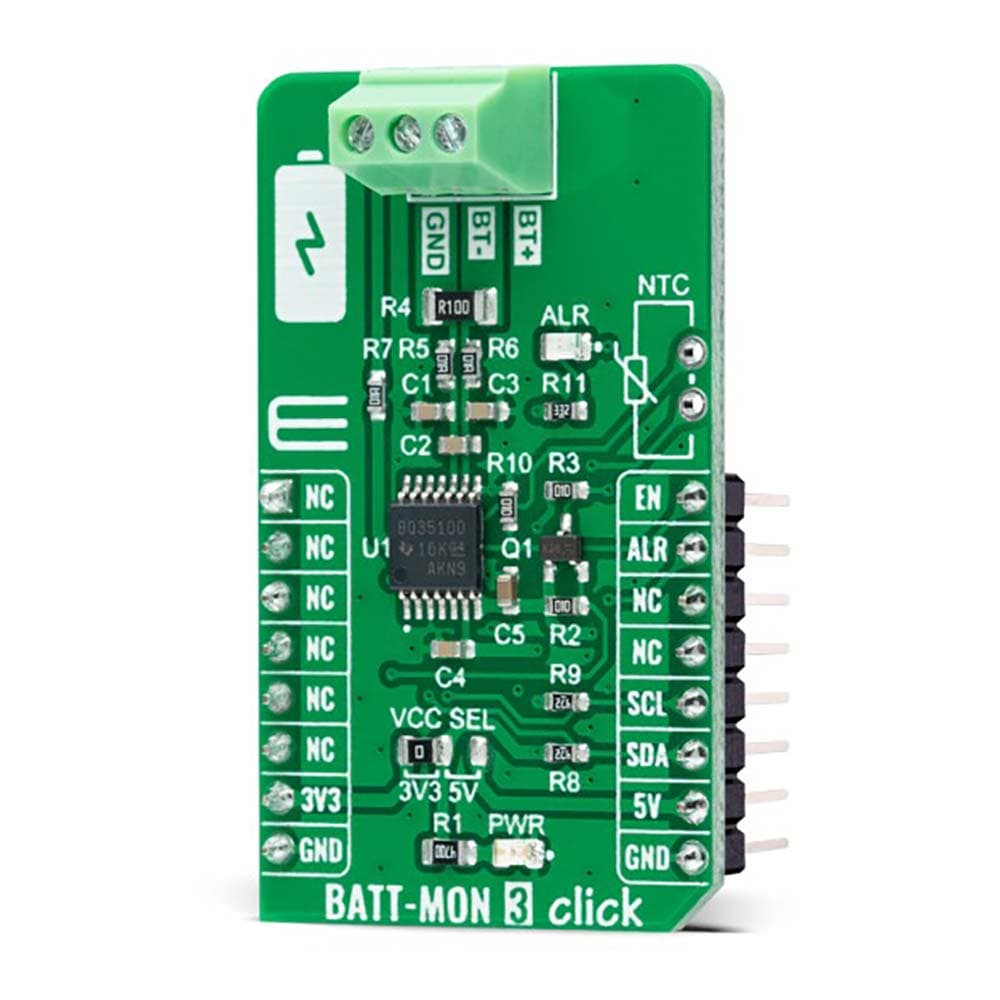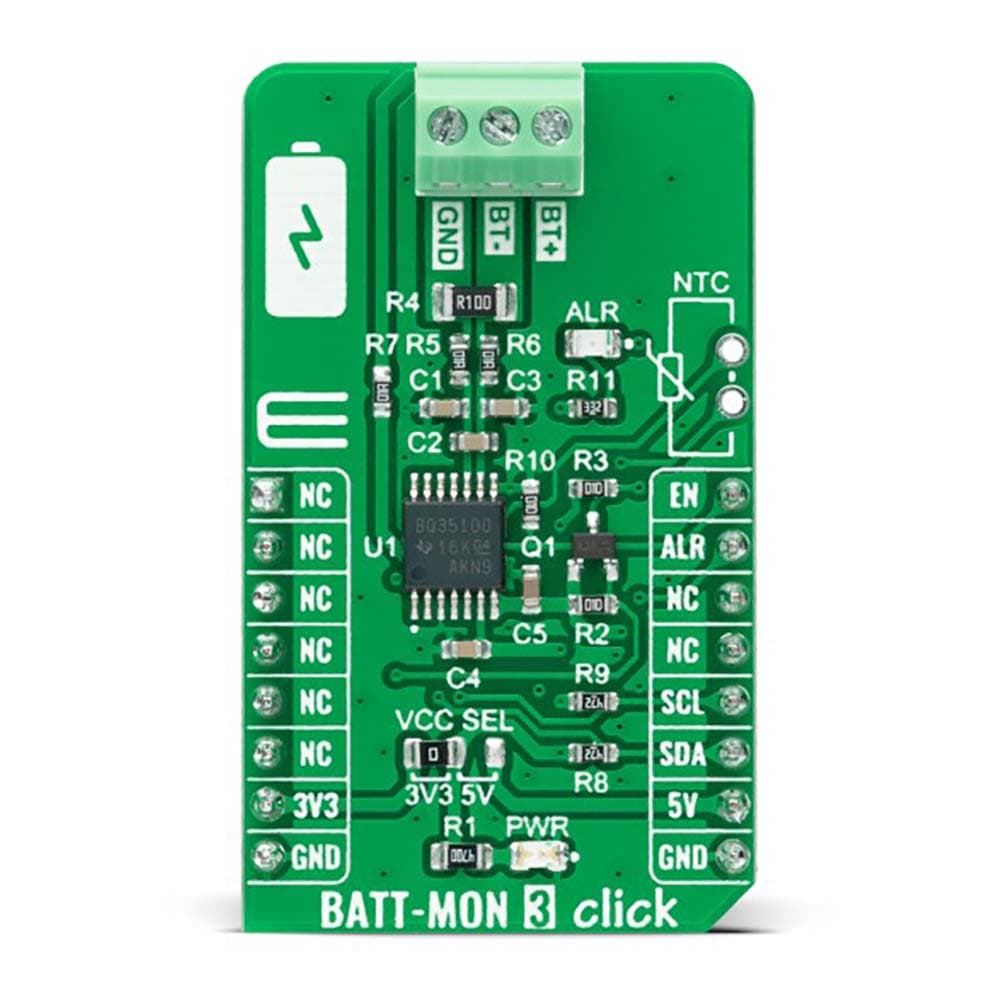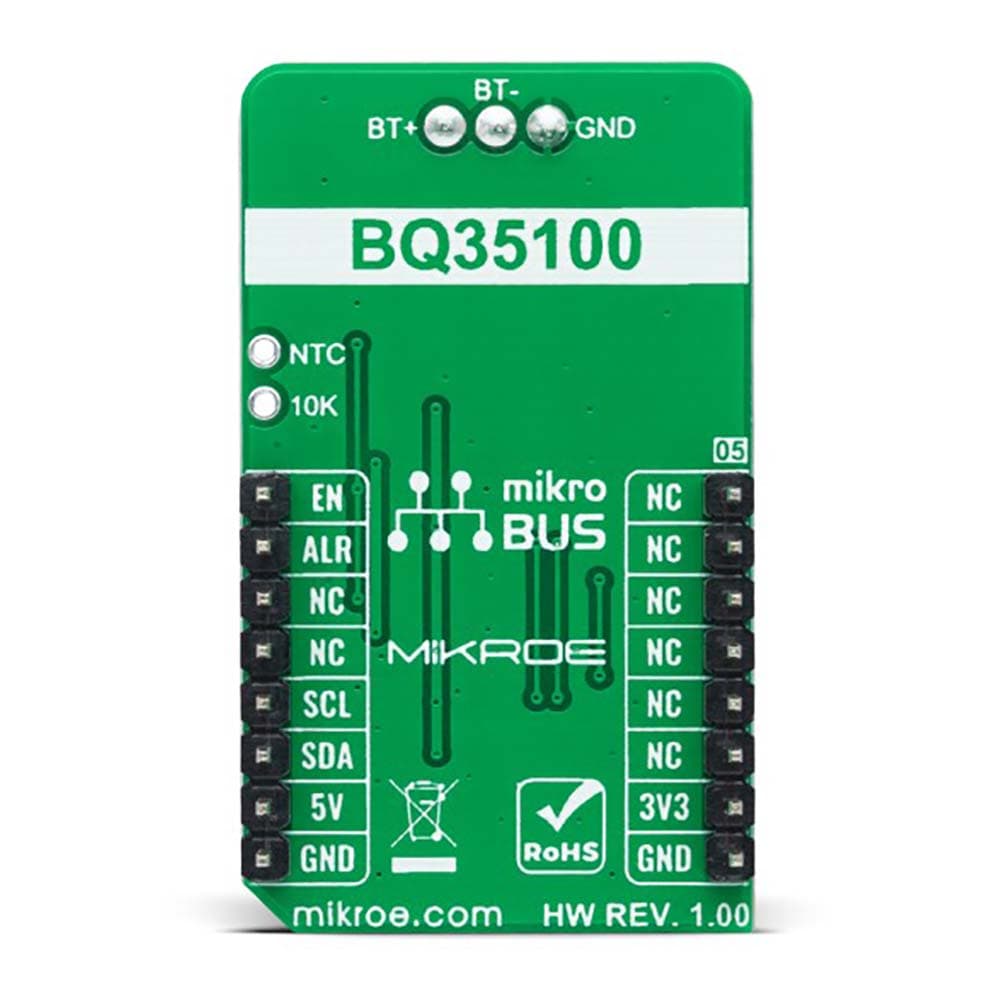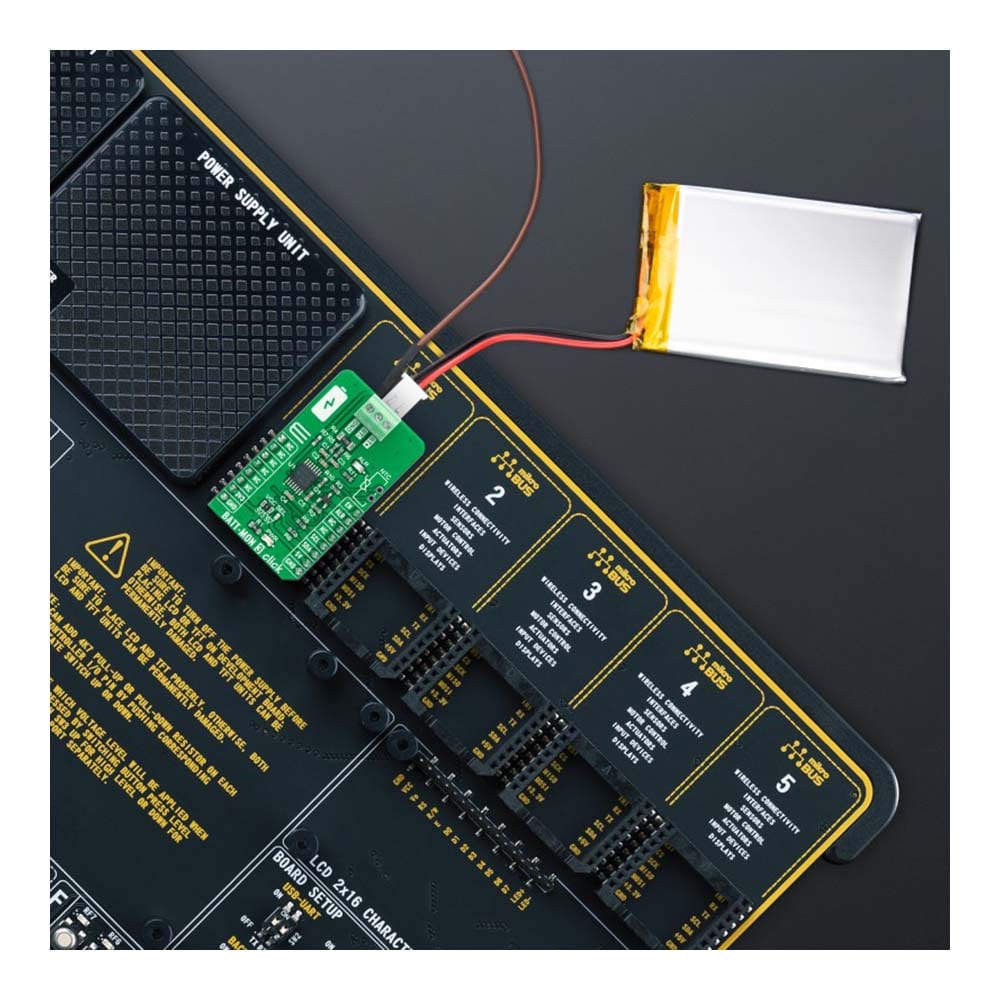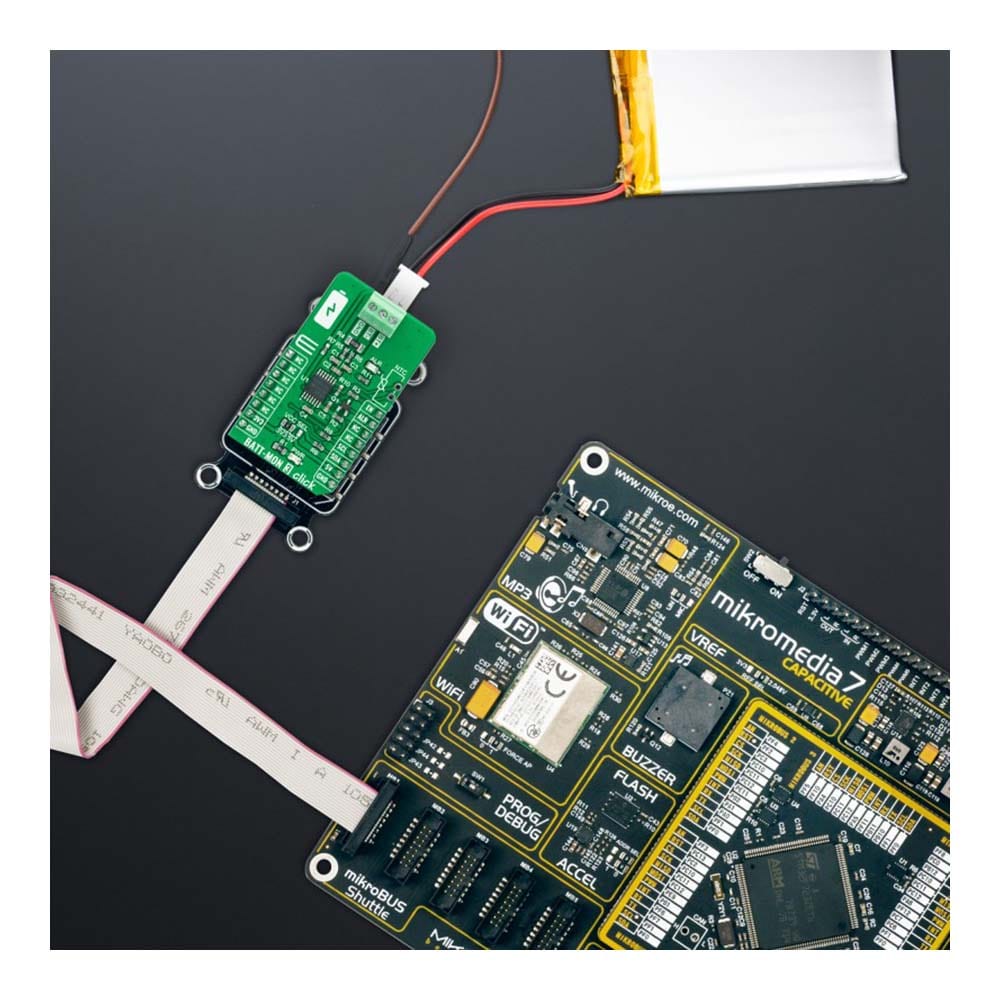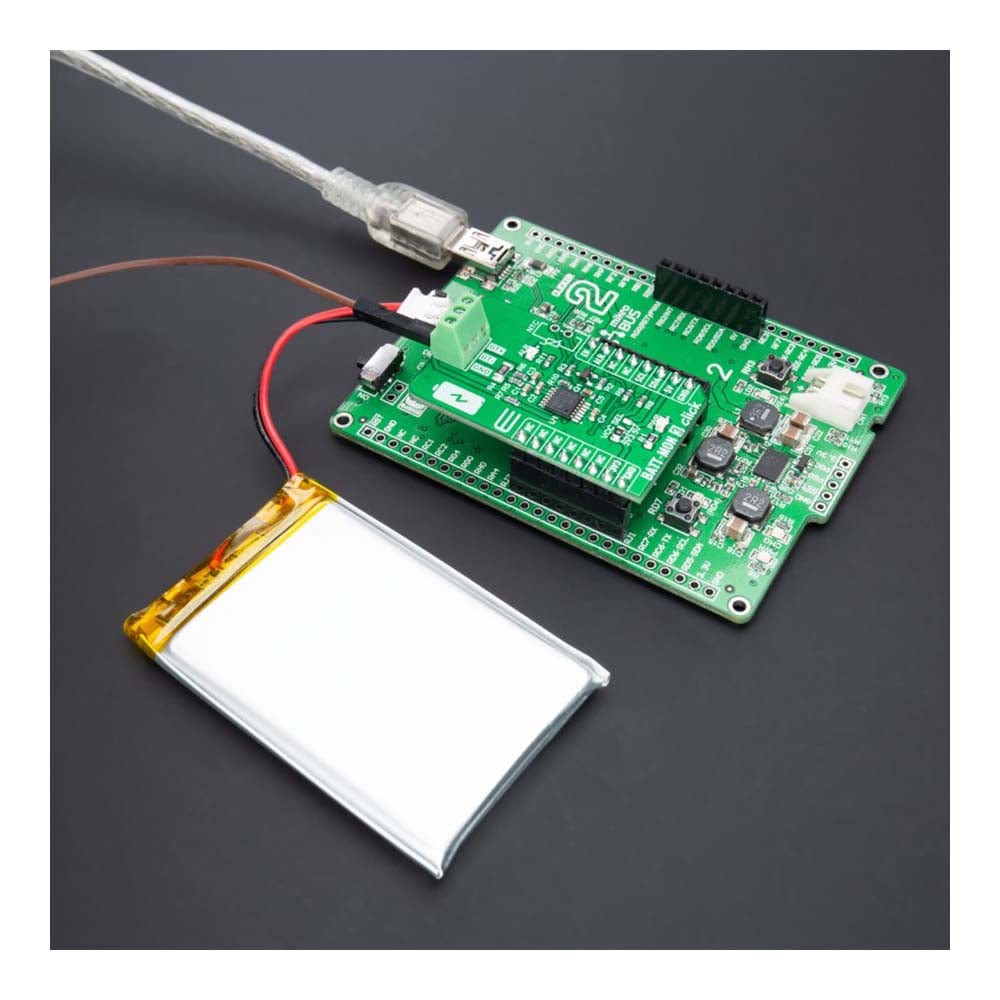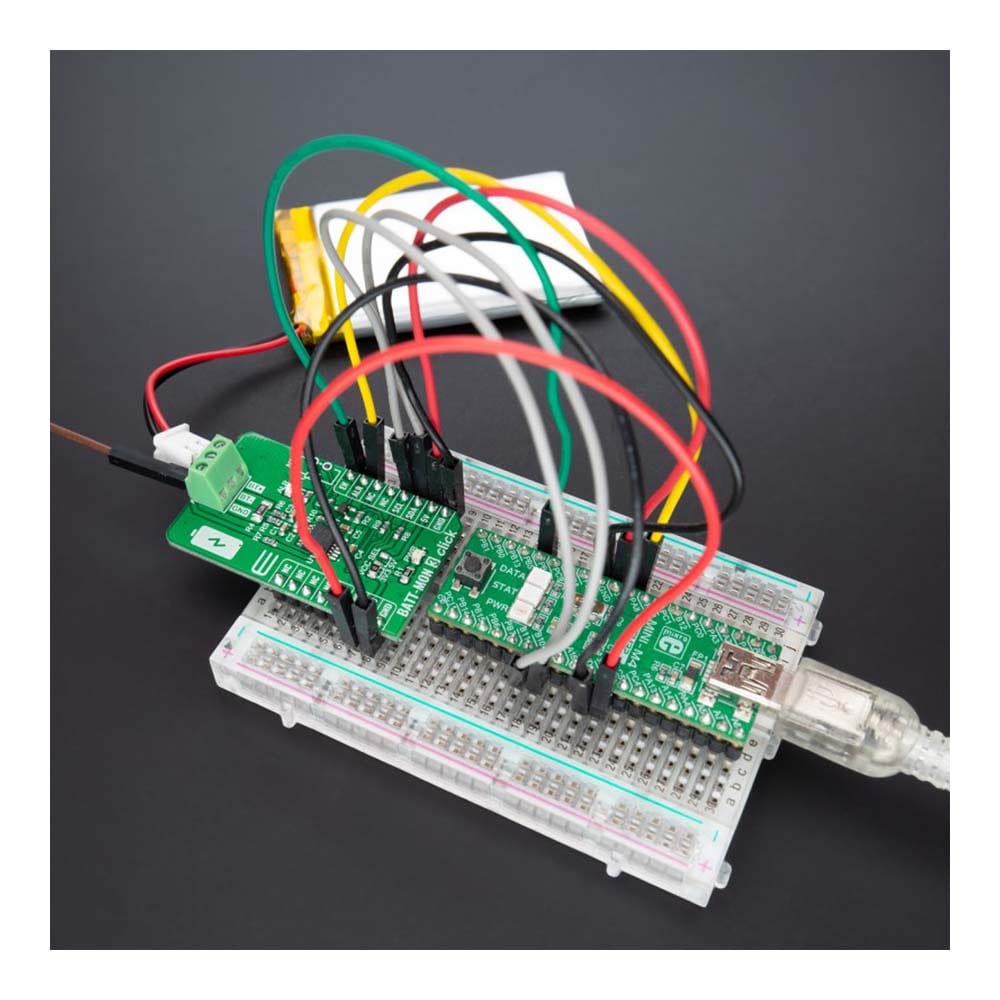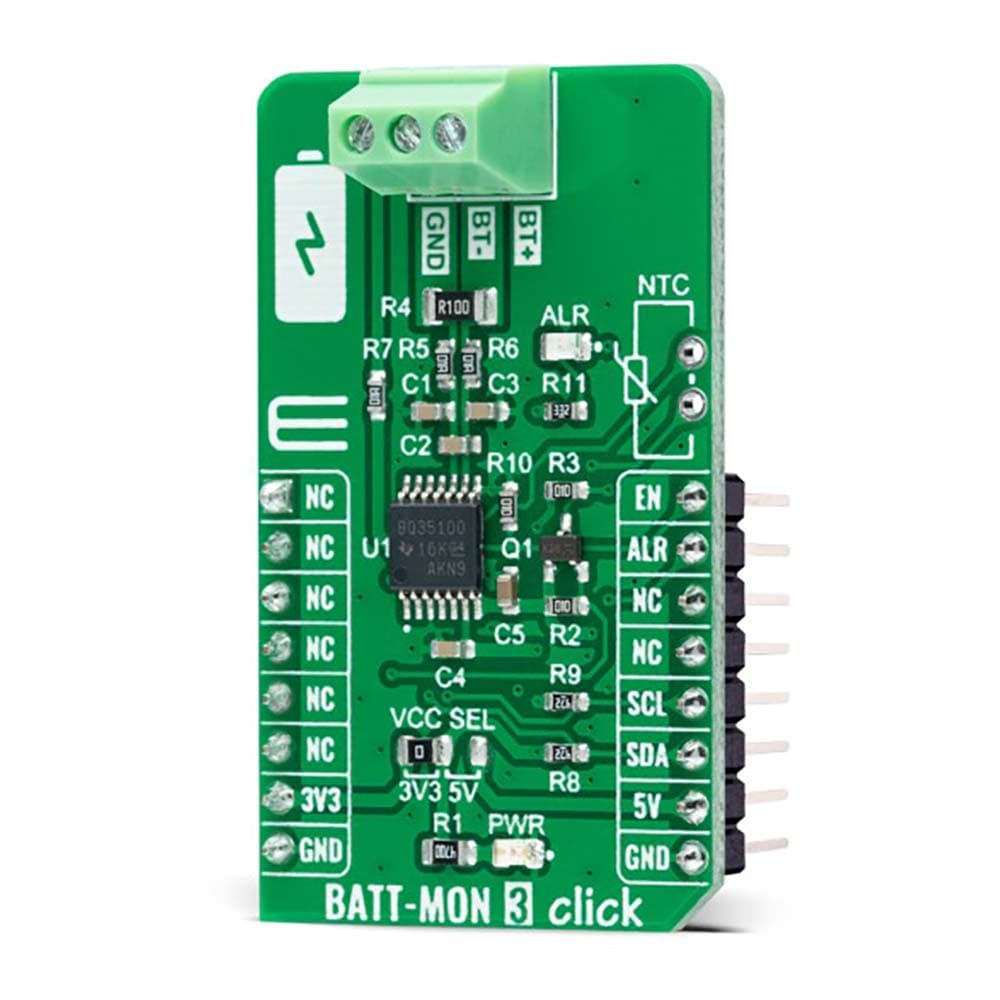
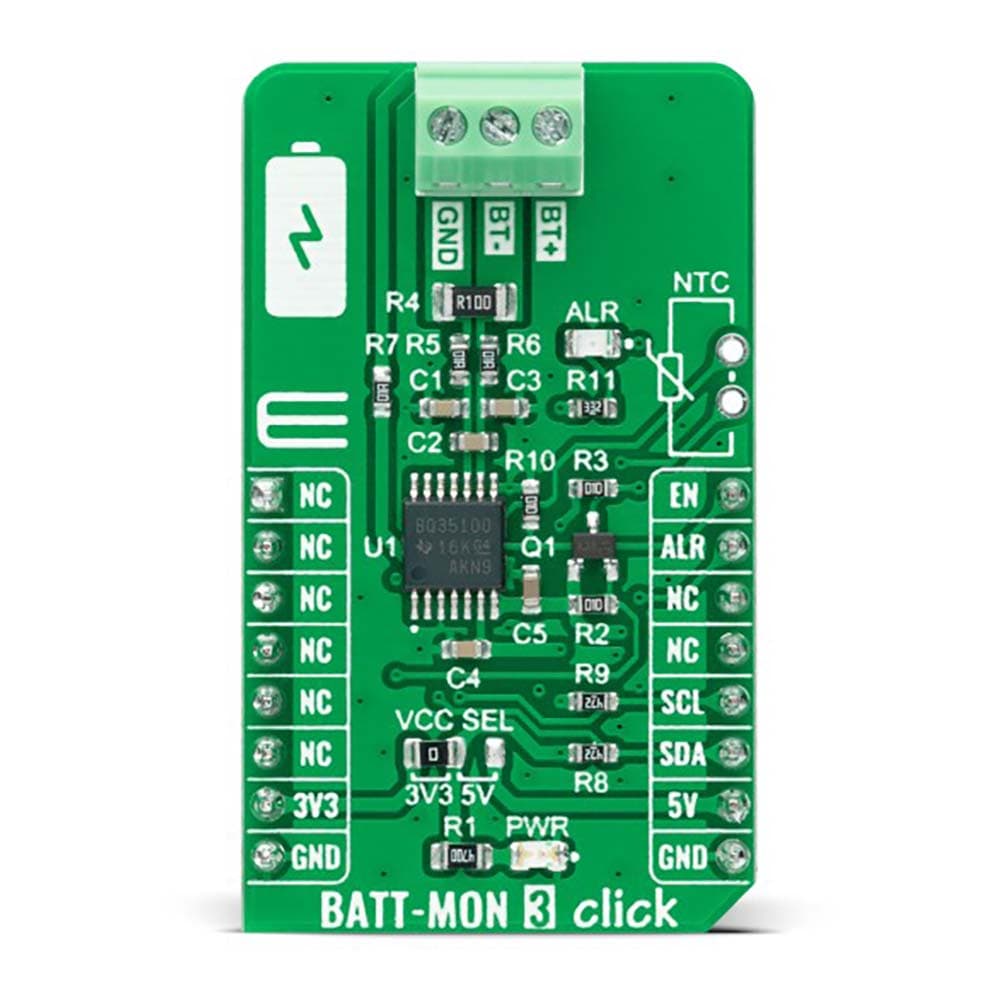
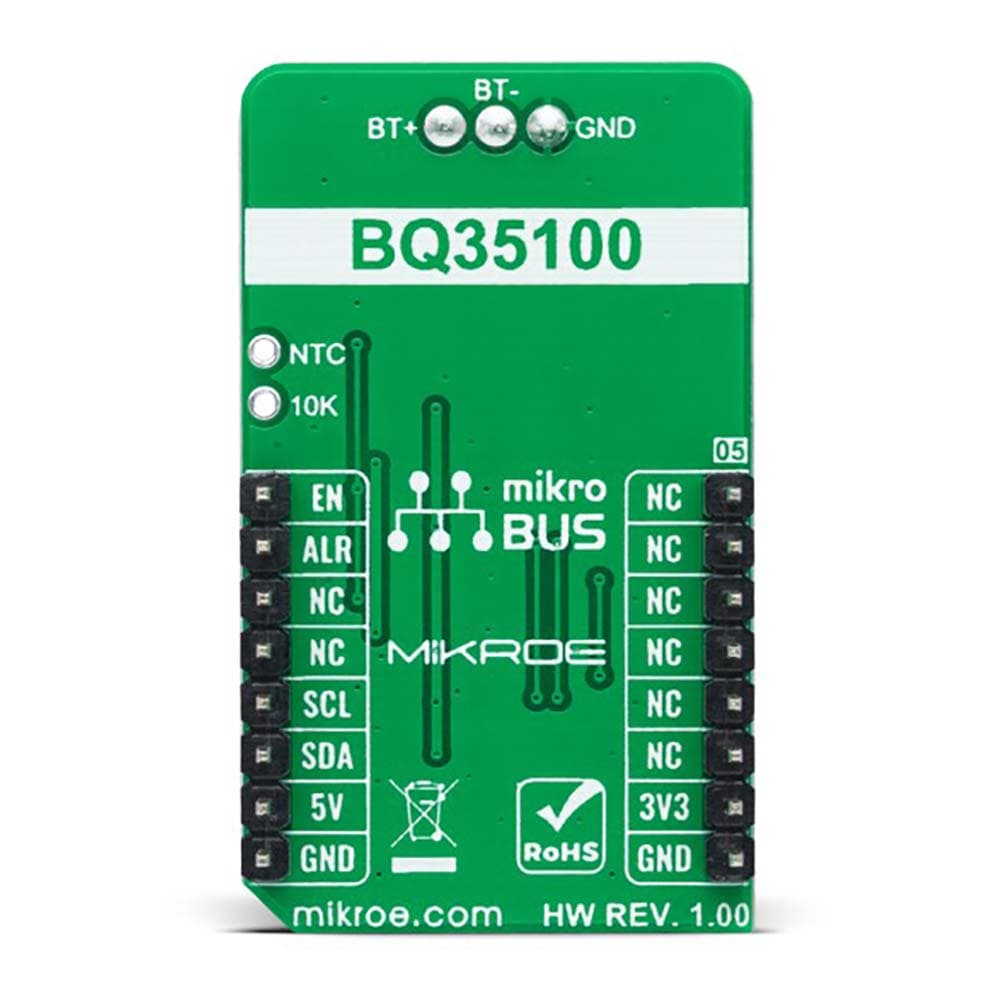
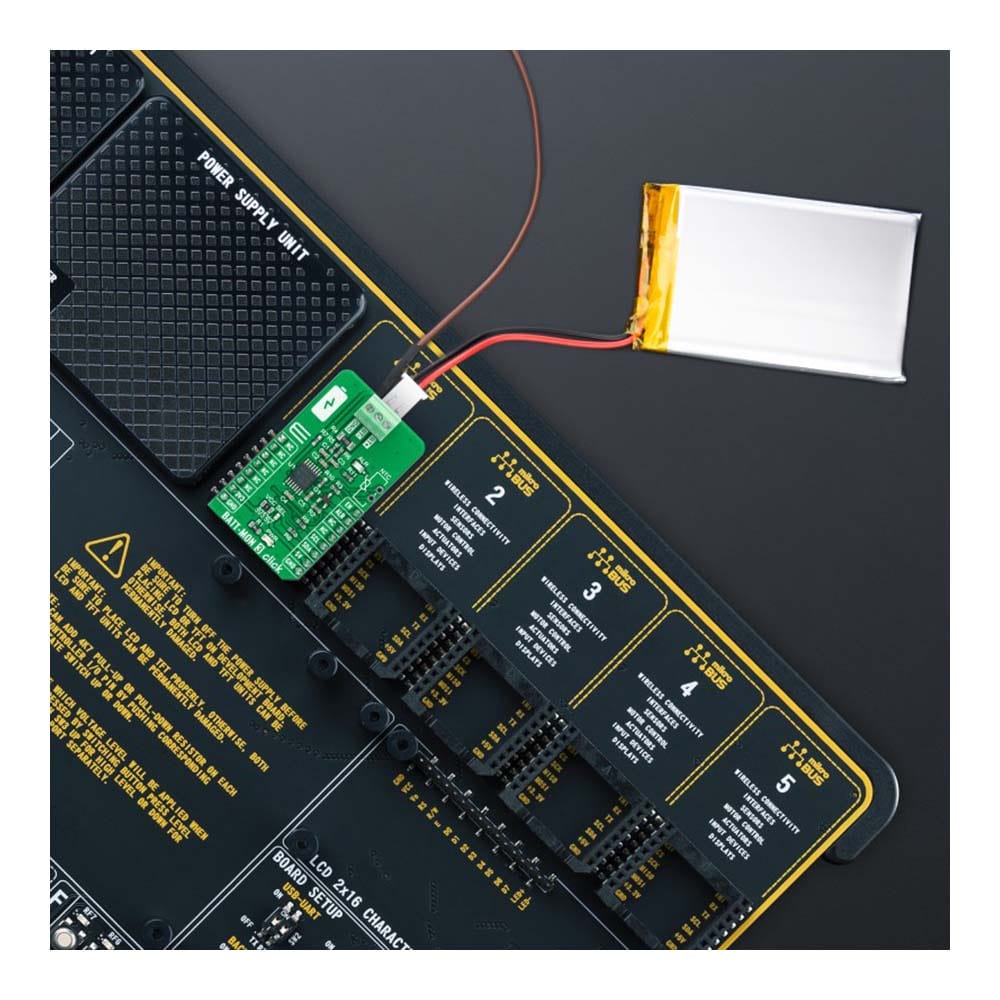
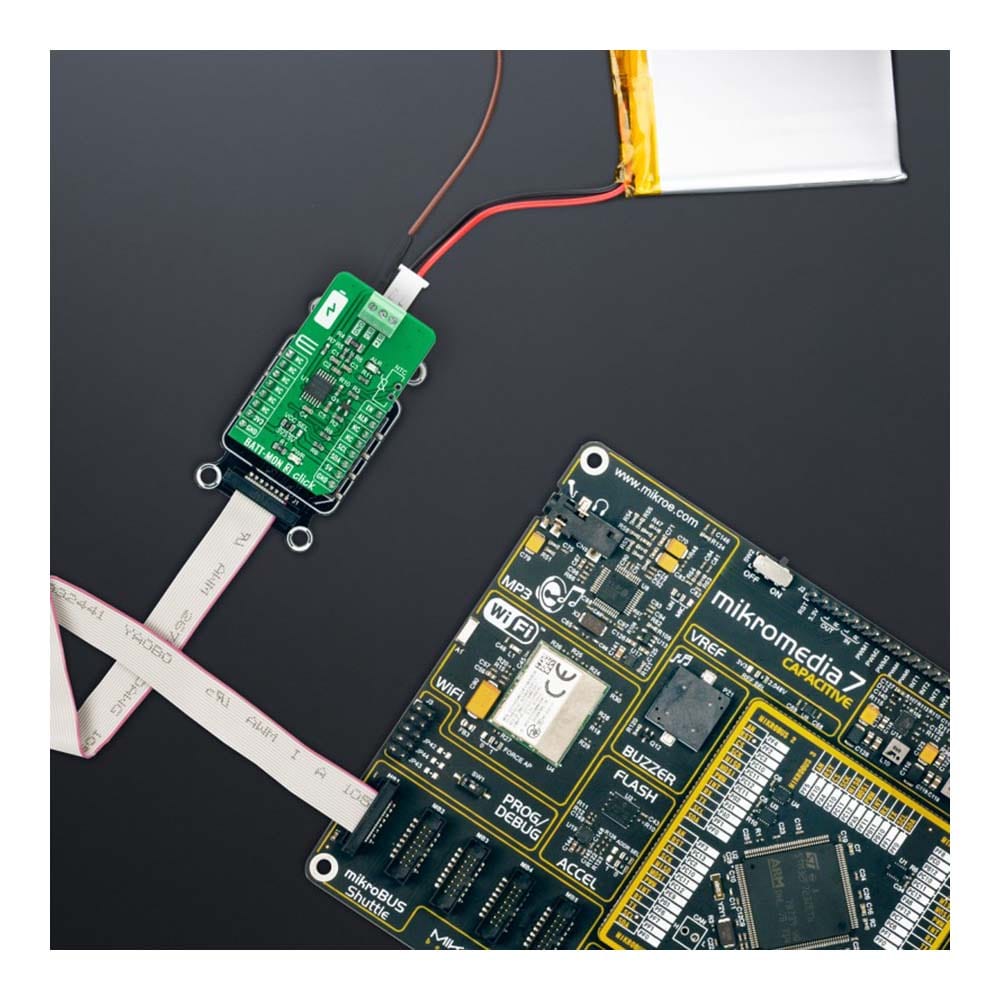
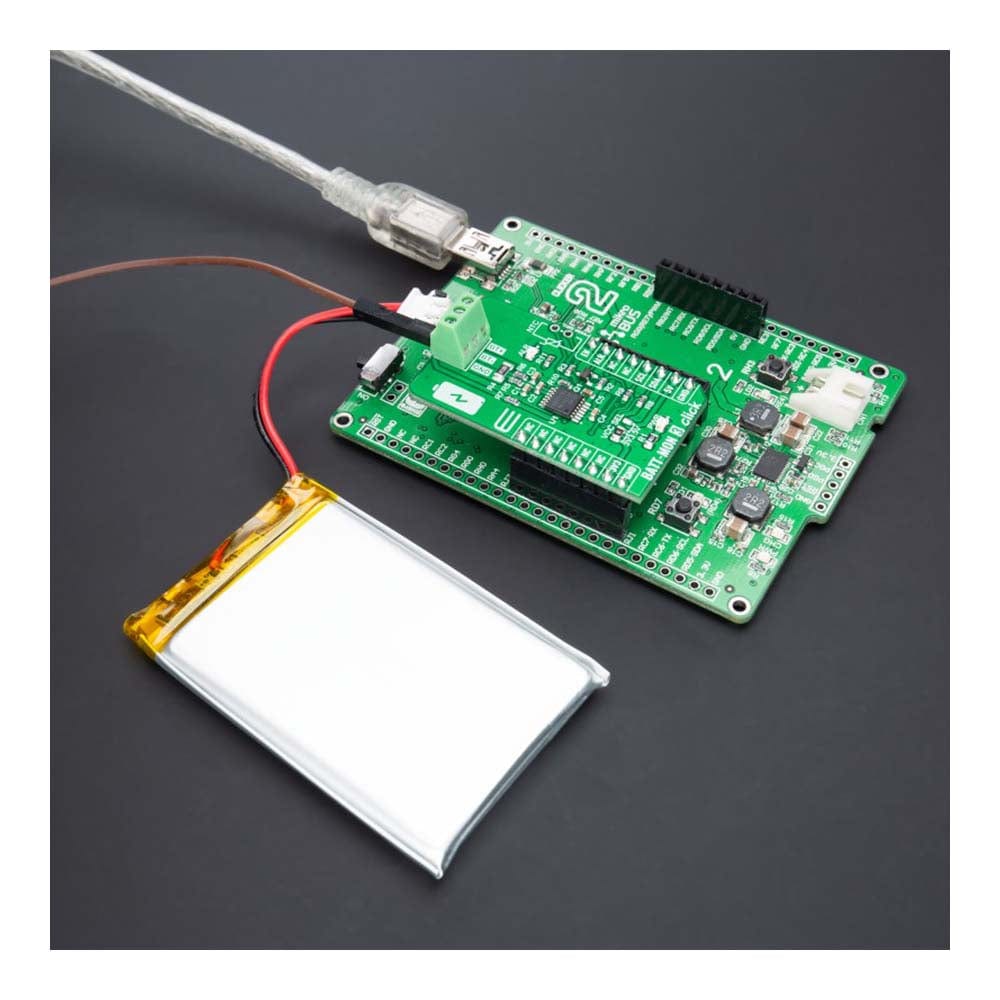
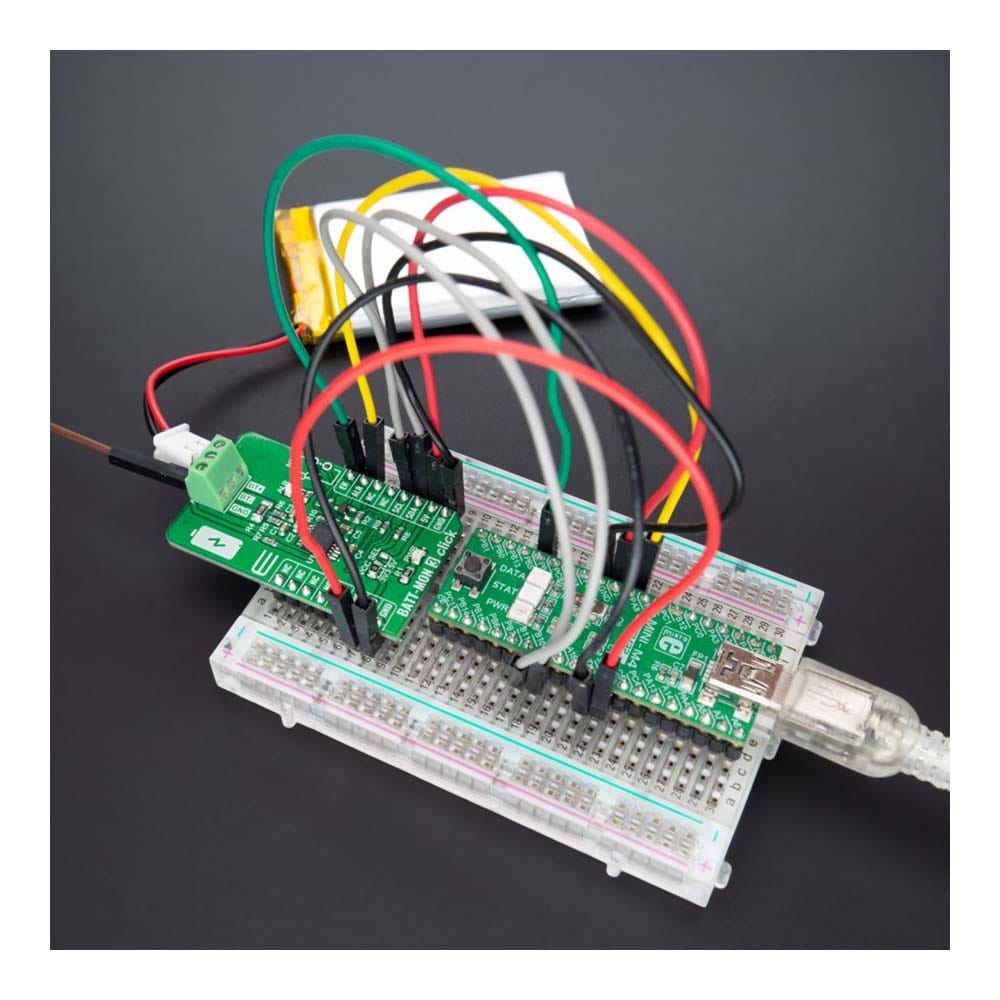
Overview
The BATT-MON 3 Click Board™ is a compact add-on board representing an advanced battery monitoring solution. This board features the BQ35100, battery fuel gauge, and end-of-service monitor from Texas Instruments. The BQ35100 provides highly configurable fuel gauging for non-rechargeable (primary) lithium batteries without requiring a forced battery discharge. It uses patented TI gauging algorithms to support the option to replace an old battery with a new one seamlessly. It provides accurate results with ultra-low average power consumption, alongside an I2C interface through which the host can read the gathered data. This Click board™ can be used in battery systems suitable for dynamic load and large ambient temperature change applications, for battery status reporting and diagnostics with early failure detection for flow meter systems, or to extend battery run-time with accurate battery gauging in various applications.
The BATT-MON 3 Click Board™ is supported by a mikroSDK compliant library, which includes functions that simplify software development. This Click board™ comes as a fully tested product, ready to be used on a system equipped with the mikroBUS™ socket.
Downloads
Das BATT-MON 3 Click Board™ ist eine kompakte Zusatzplatine, die eine erweiterte Batterieüberwachungslösung darstellt. Diese Platine verfügt über BQ35100, Batterie-Ladezustandsanzeige und End-of-Service-Monitor von Texas Instruments. Das BQ35100 bietet eine hochkonfigurierbare Ladezustandsanzeige für nicht wiederaufladbare (primäre) Lithiumbatterien, ohne dass eine erzwungene Batterieentladung erforderlich ist. Es verwendet patentierte TI-Messalgorithmen, um die Option zu unterstützen, eine alte Batterie nahtlos durch eine neue zu ersetzen. Es liefert genaue Ergebnisse mit extrem niedrigem durchschnittlichen Stromverbrauch sowie eine I2C-Schnittstelle, über die der Host die erfassten Daten lesen kann. Dieses Click Board™ kann in Batteriesystemen verwendet werden, die für dynamische Last und Anwendungen mit großen Umgebungstemperaturschwankungen geeignet sind, für Batteriestatusberichte und -diagnosen mit frühzeitiger Fehlererkennung für Durchflussmessersysteme oder zur Verlängerung der Batterielaufzeit mit genauer Batteriemessung in verschiedenen Anwendungen.
Das BATT-MON 3 Click Board™ wird von einer mikroSDK-kompatiblen Bibliothek unterstützt, die Funktionen enthält, die die Softwareentwicklung vereinfachen. Dieses Click Board™ wird als vollständig getestetes Produkt geliefert und ist bereit für den Einsatz auf einem System, das mit der mikroBUS™-Buchse ausgestattet ist.
| General Information | |
|---|---|
Part Number (SKU) |
MIKROE-5098
|
Manufacturer |
|
| Other | |
Country of Origin |
|
HS Code Customs Tariff code
|
|
EAN |
8606027388958
|
Warranty |
|
Frequently Asked Questions
Have a Question?
Be the first to ask a question about this.

